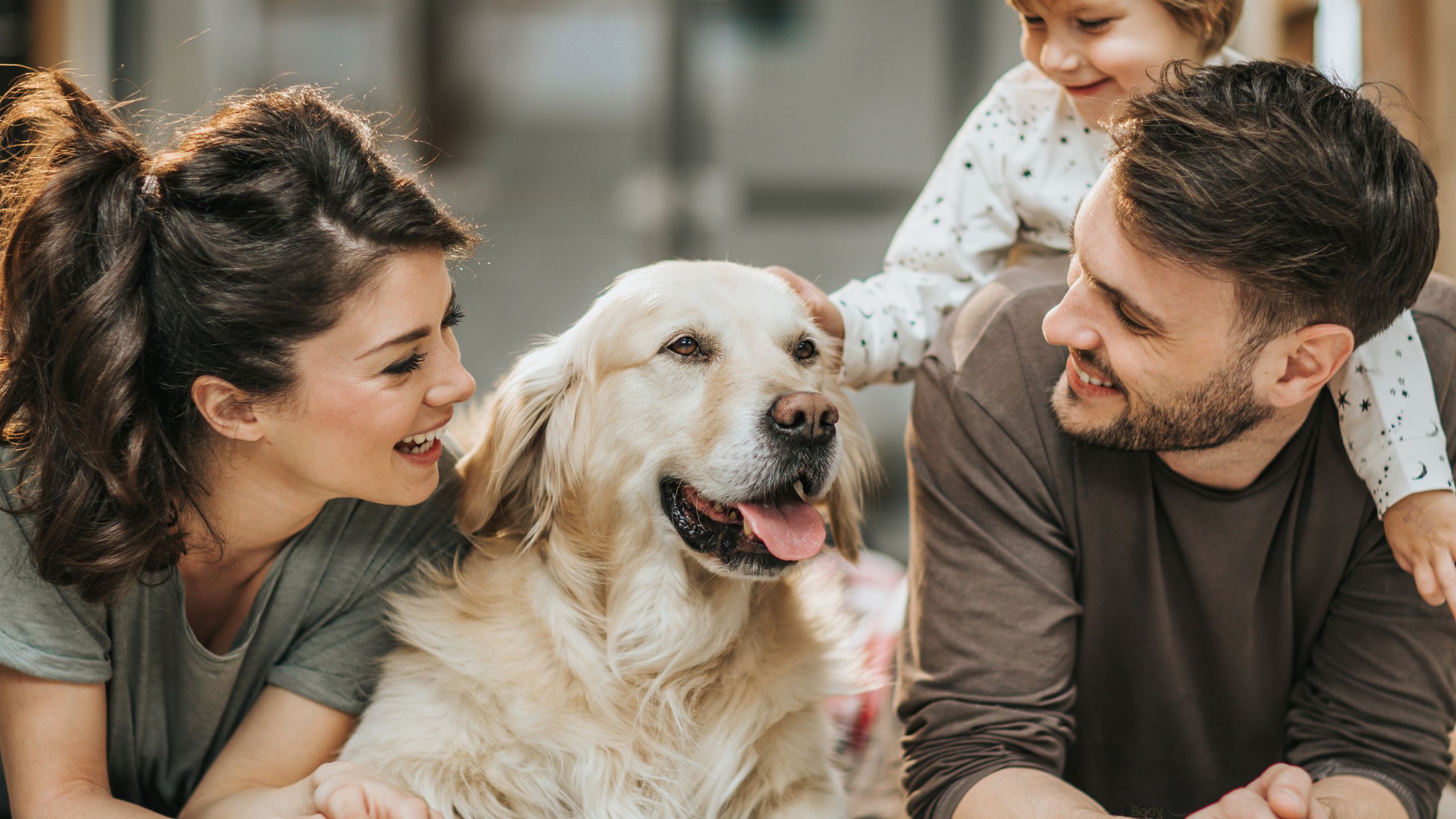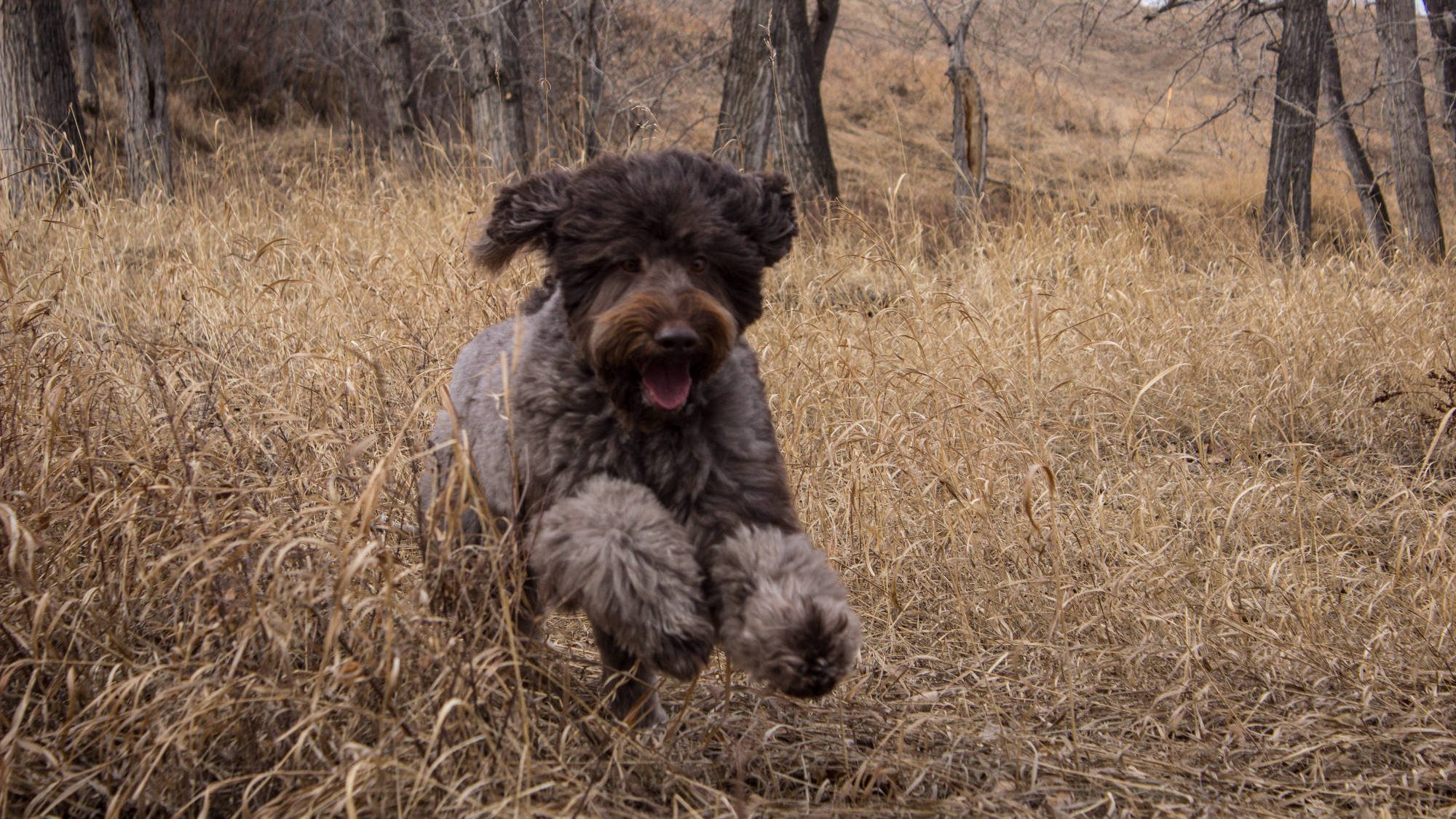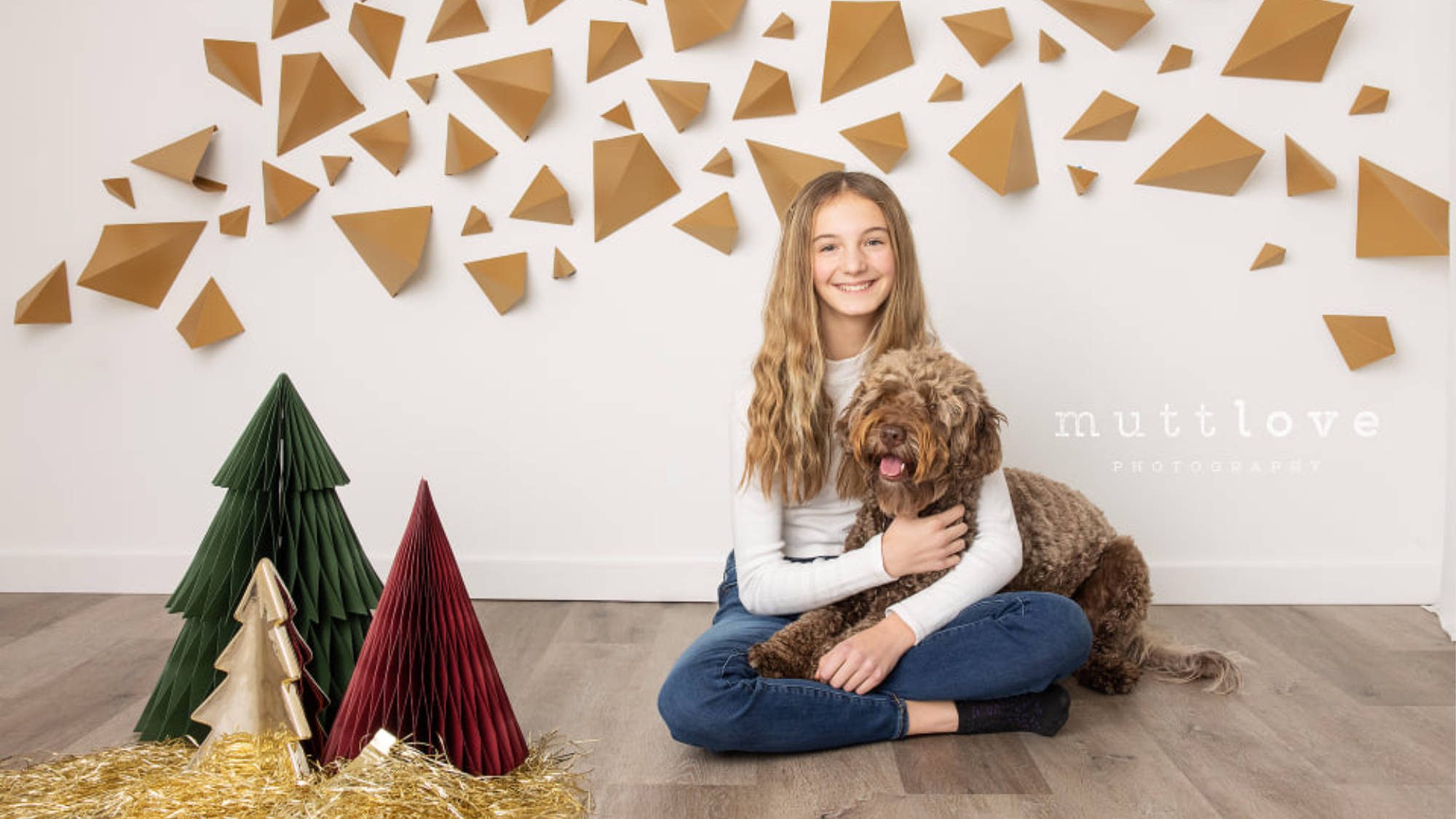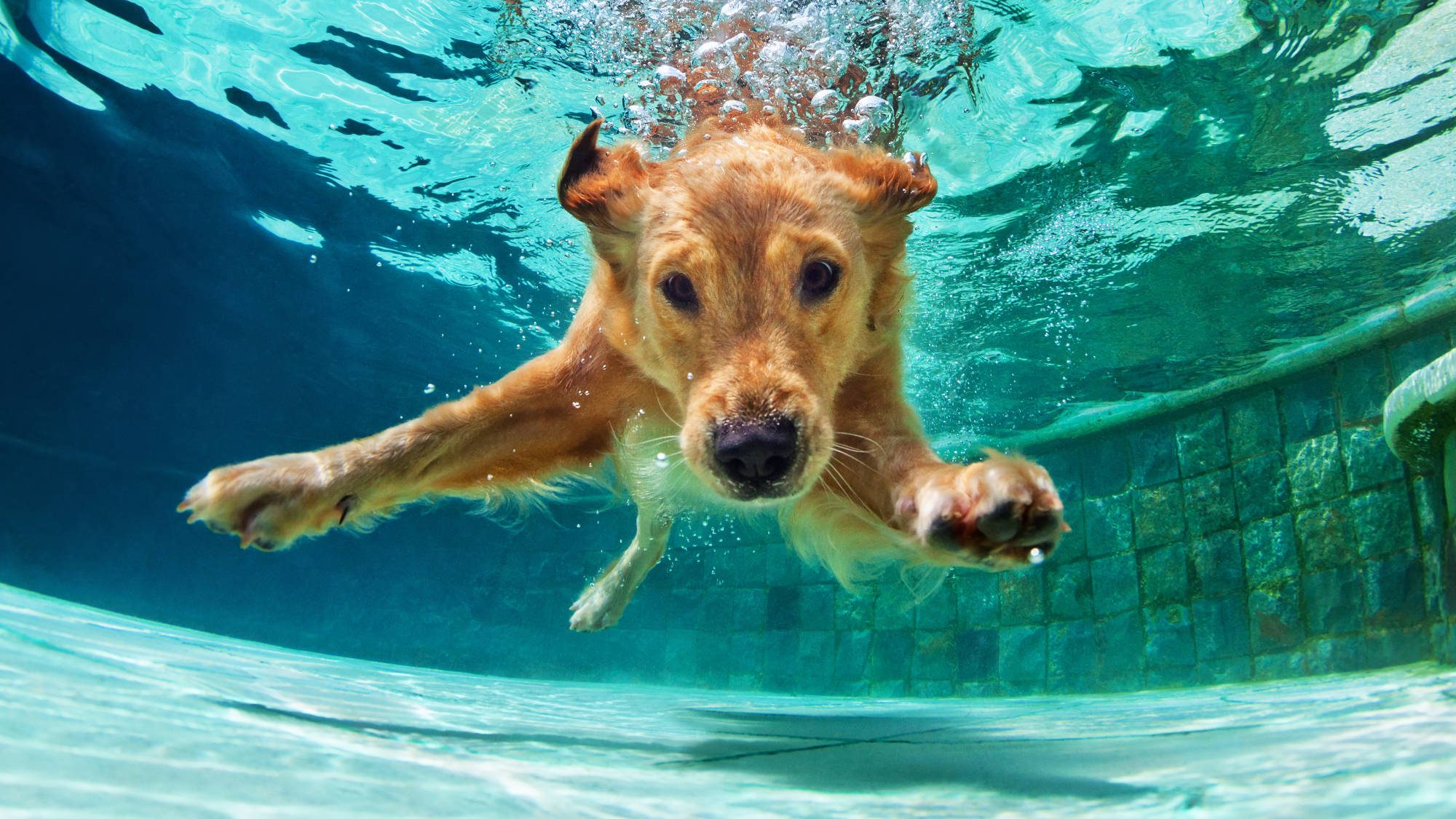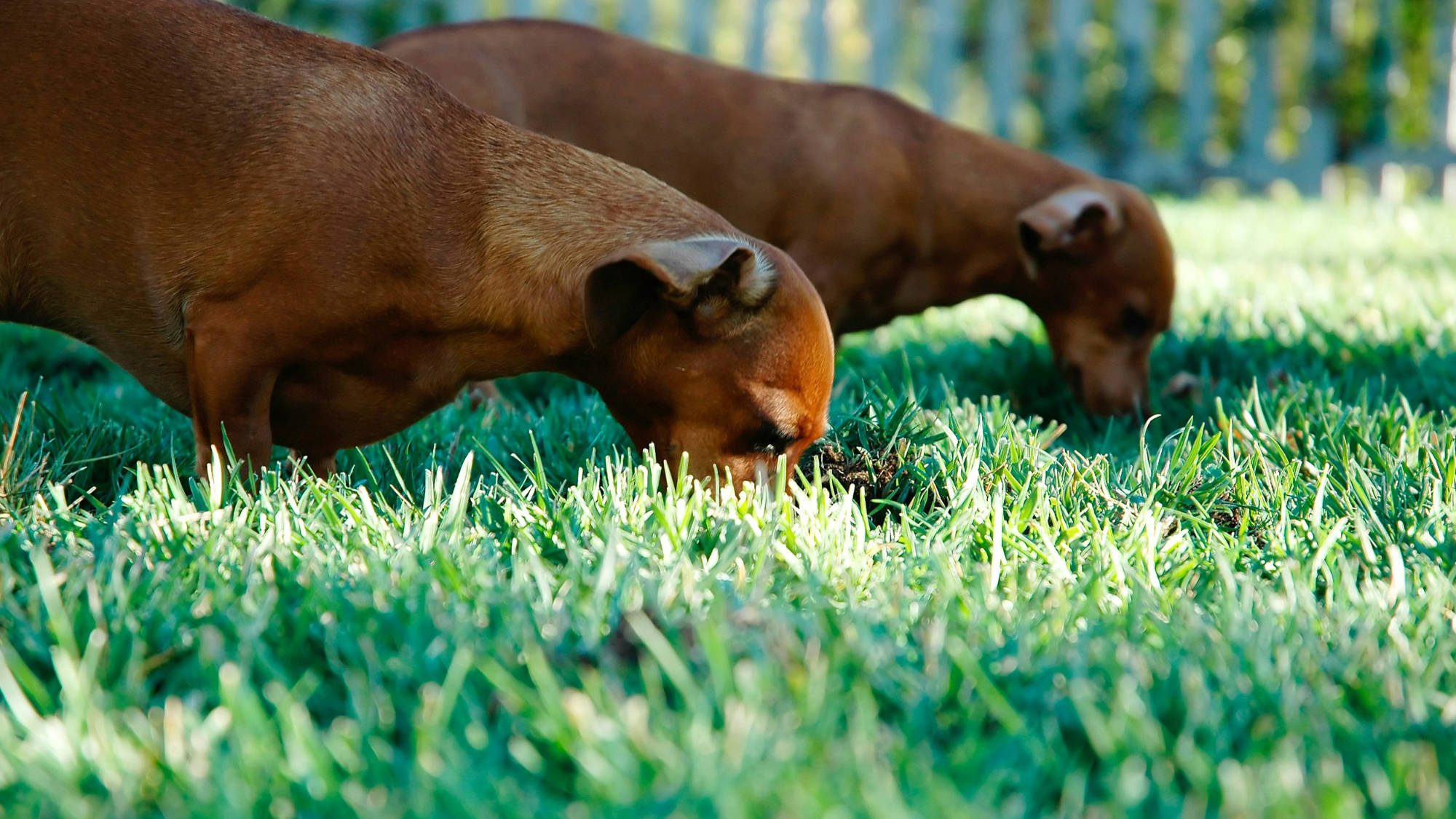The Social Lives of Dogs – Communicating Through Scent and Signals
While humans gather in places like pubs and cafes to share drinks and conversation, dogs find their social hotspots at tree trunks, fence posts, and lampposts. For people, the taste of a favorite drink is a key part of social interaction. For dogs, the rich and varied smells of urine are the primary means of connecting with their community.
Humans primarily use spoken and written language to communicate, but dogs have a diverse set of “languages.” They express themselves through body language, which includes an array of facial expressions and postures like play bows, tail wags, submissive smiles, and more. Dogs also communicate vocally, using a range of barks, whimpers, whines, howls, and growls to convey their feelings and intentions.
The most fascinating aspect of canine communication is their use of scent. By sniffing muzzles, ear glands, tail glands, and particularly urine and feces, dogs gather an incredible amount of social information. Their highly developed sense of smell allows them to understand and navigate their world in ways that are deeply complex and nuanced.
Table of Contents
- The Social Lives of Dogs – Communicating Through Scent and Signals
- Decoding Your Dog’s Body Language
- Understanding Canine Vocalizations
- The Role of Olfactory Communication
- Dog Urine as Communication
Decoding Your Dog’s Body Language
Dogs communicate their emotions through body language, but it’s not always easy for us to accurately interpret their signals. Misunderstanding a dog’s intent can escalate a difficult situation.
One of the best ways to strengthen your bond with your dog is to learn how to read their body language. While each dog has its unique way of expressing itself, most dogs use similar postures to convey their feelings.
It’s crucial to observe the entire body when interpreting a dog’s signals. For instance, a wagging tail does not always indicate happiness or relaxation, particularly if the rest of the body appears tense.
From the position of their ears and the expression on their face to the stance of their feet and the movement of their tail, every part of a dog’s body contributes to conveying their emotional state.
To help you understand your dog better, here are some fundamental aspects of canine body language.
Signs of a Relaxed Dog
A dog who is at ease will display an open and loose demeanor, fully engaging with their environment. Relaxed body language in dogs is often a sign of contentment and happiness.
Ears: Resting in their natural position; upright ears will be erect, while floppy ears will hang slightly forward.
Eyes: Soft and relaxed, with a smooth forehead free of wrinkles.
Mouth: Either closed with no tension around the lips, or open in a calm pant if the dog is active.
Tail: Wagging in a broad, sweeping motion aligned with the spine, or held slightly higher if the dog is playing.
The dog’s overall posture will be loose and wiggly, with movements that might be exaggerated, especially during playtime.
Examples of Relaxed Dog Body Language
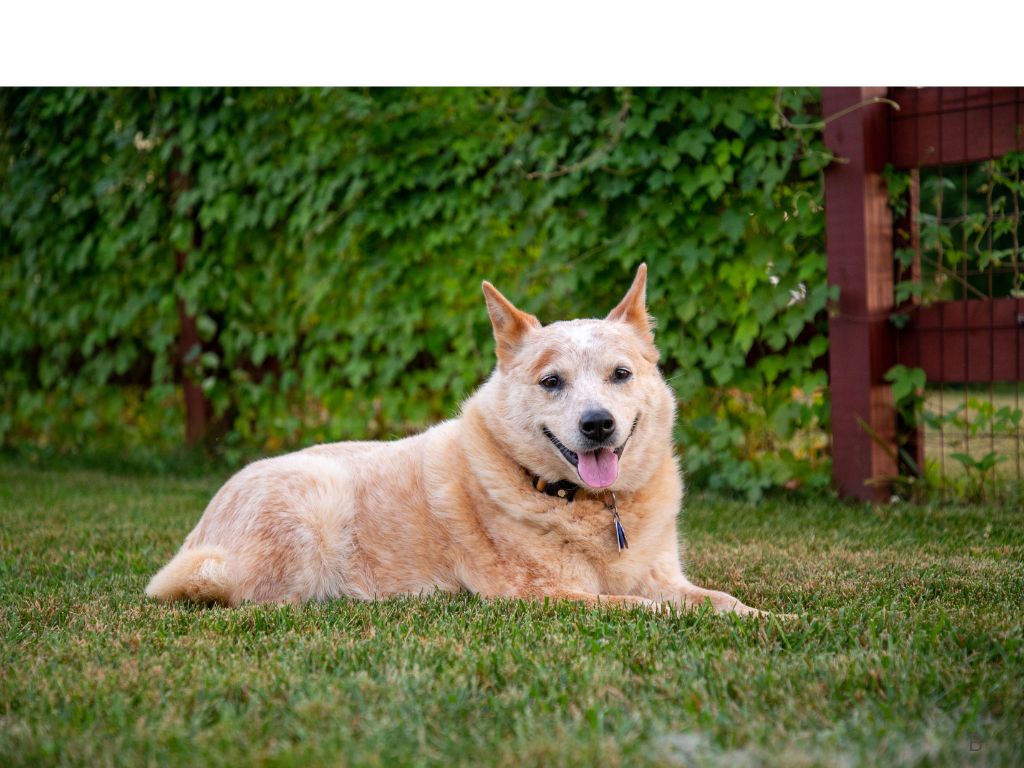
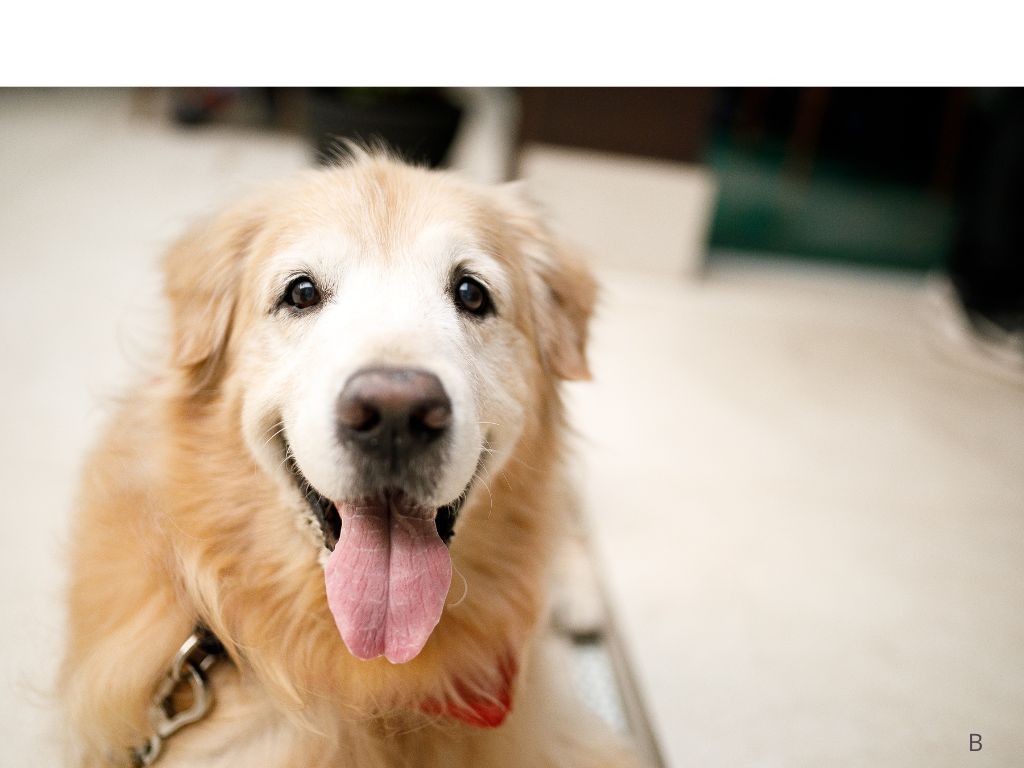
Signs of an Alert Dog
When a dog is alert, they’re actively gathering information from their environment.
Ears: Erect and facing forward, even floppy ears will show a base perk.
Eyes: Wide open and focused, with a smooth, relaxed forehead.
Mouth: Closed, without any tension around the lips or snout.
Tail: Extended straight out from the body, aligned with the spine, possibly with a slight wag.
The dog’s body will be evenly balanced on all four feet, in a poised and ready stance, as they decide their next move.
Examples of Alert Dog Body Language
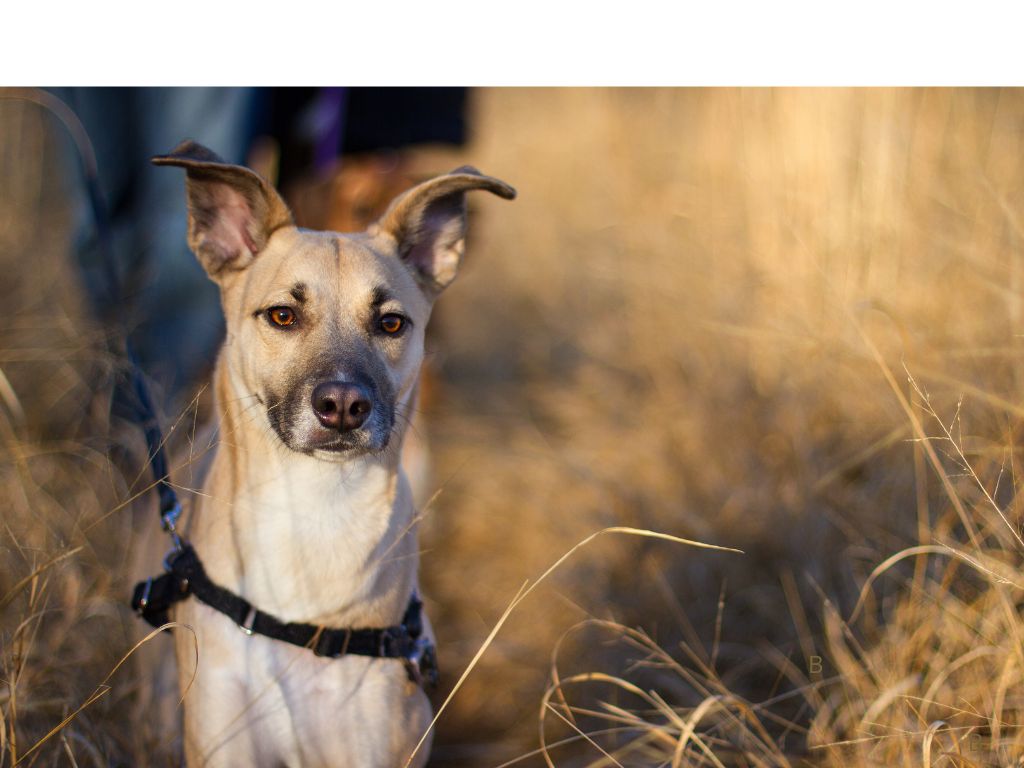
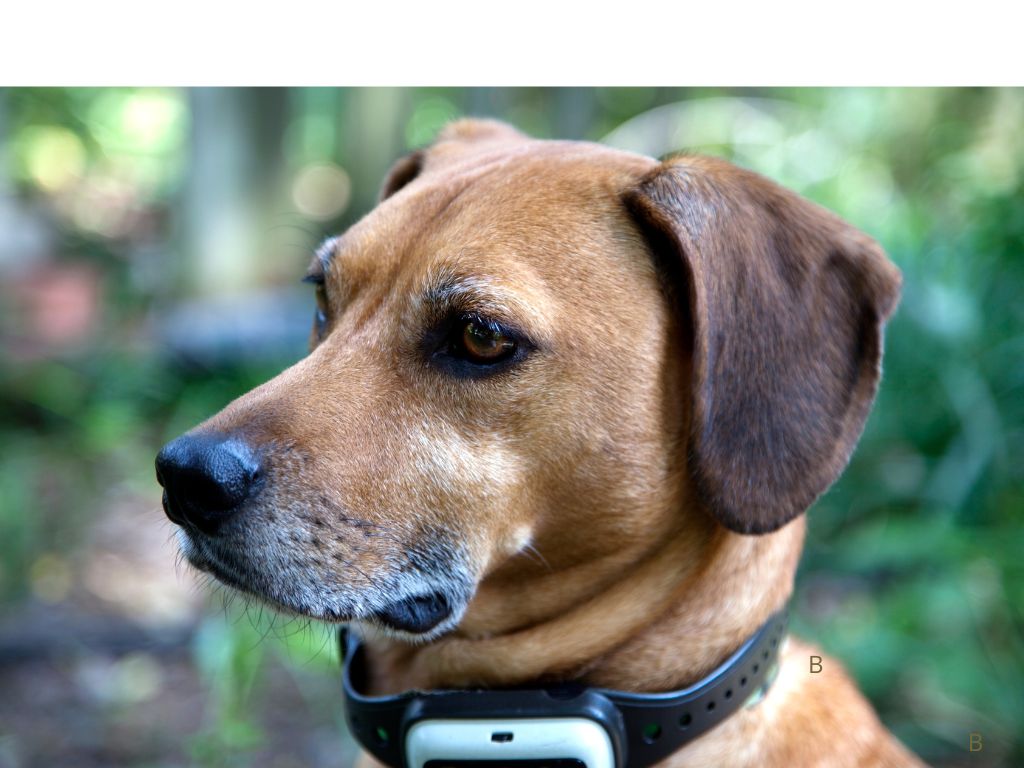
Signs of a Stressed or Nervous Dog
A dog feeling stressed or uneasy will show postures similar to those of a nervous dog and may also display a series of behaviors known as “calming signals.” These behaviors serve as attempts to self-soothe or to diffuse escalating tension.
Calming signals include:
- Looking away
- Turning away
- Moving in a curve
- Slow movements
- Yawning
- Freezing
- Lip licking
- Lip smacking
- Sniffing the ground
- Raising one paw
- Scratching
- Shaking off (as if wet)
Stressed dogs often avoid direct eye contact or may glance at the source of their stress and then quickly look away.
A distressed dog may also perform exaggerated yawns, sneeze, or frequently lick their lips. They might shake their bodies as if they are wet, engage in excessive self-grooming, or scratch themselves more than usual.
Example of Stressed or Nervous Dog Body Language
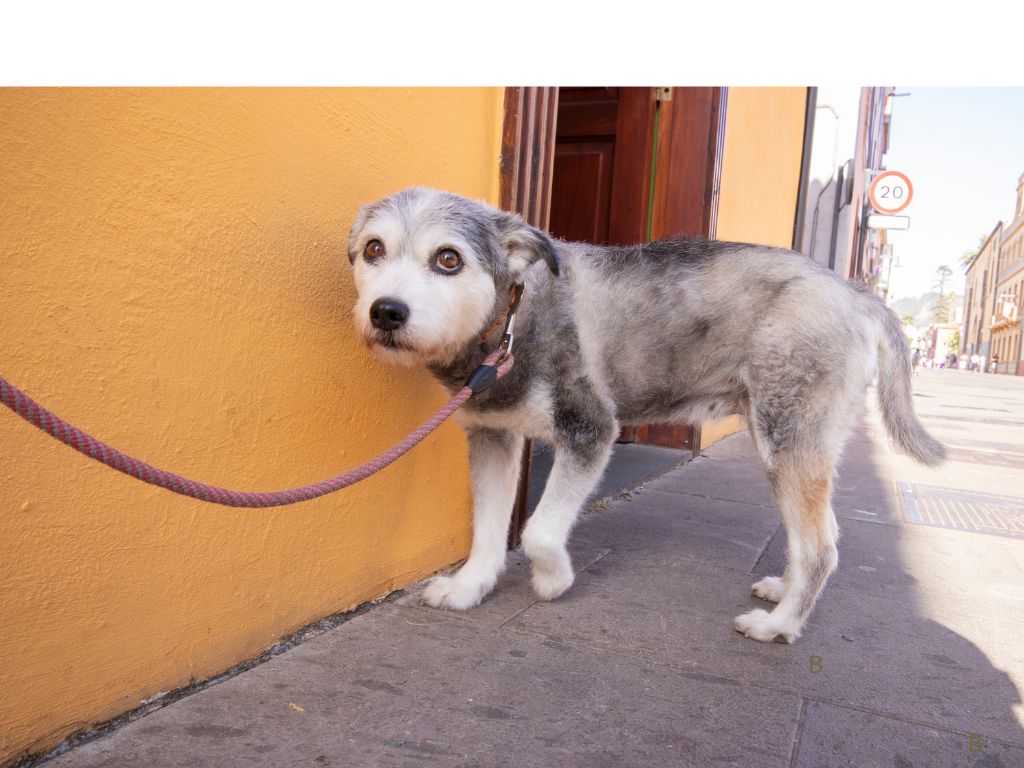
Signs of a Fearful Dog
A dog experiencing fear will display a stiff posture, often hunching over with a curved back and their head held low to the ground.
Ears: Pulled back tightly against the head.
Eyes: They may turn their head away from the source of fear but keep their eyes on it, revealing the whites of their eyes, commonly known as “whale eyes.”
Mouth: The mouth may be tightly closed with the corners pulled back, or the dog might start panting without any change in temperature or activity level.
Tail: The tail is usually tucked tightly against the belly, and the dog’s weight is shifted backward, away from the perceived threat.
The dog’s overall posture is stiff and low to the ground, and they might shed more than usual when nervous.
Example of Fearful Dog Body Language

Appeasement Body Language
What was once referred to as “submissive” behavior is now recognized as appeasement body language. Through these gestures, a dog aims to appear smaller and non-threatening. They might lower themselves to the ground or roll over to expose their belly.
Ears: Pulled back against the head.
Eyes: Avoiding direct eye contact, often with a squint.
Mouth: There is tension around the mouth, and the dog may pull back their lips to reveal their front teeth in an “appeasement grin,” which resembles a smile but signifies deference. They may also lick their muzzle frequently.
Tail: Tucked or held low, wagging slowly in a tight motion.
Additionally, the dog might raise a front paw as an appeasement gesture. Their overall movement is slow, and they shift their weight backward to appear less threatening.
Example of Appeasement Body Language
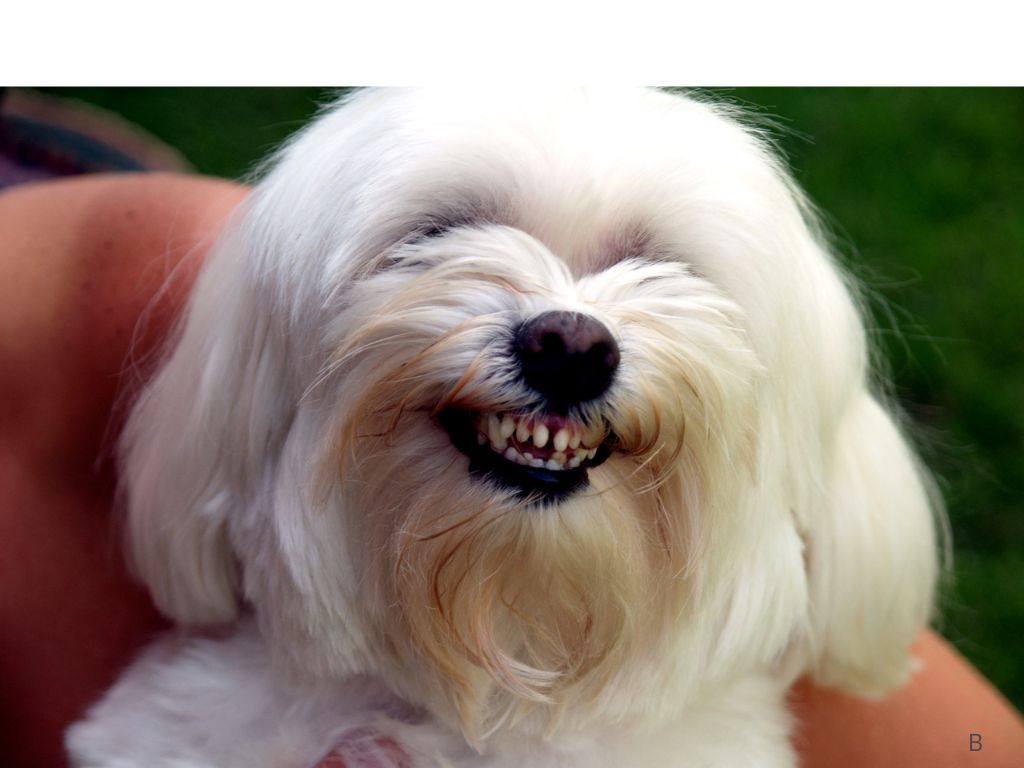
Aggressive Dog Body Language
There are 11 different forms of aggression, ranging from predatory to fear aggression. In general, a dog showing aggressive body language is ready to react to a stressor.
- Ears: Dogs will hold their ears differently depending on the reason for the aggression. This is a scenario where it’s essential to take a dog’s whole body positioning into account.
- A fearful dog will typically hold their ears back and against their head.
- An assertive, confident dog will prick their ears forward or to the side.
- Eyes: Their gaze will be fixed on the stimulus with a hard, unwavering stare, with wrinkles across the forehead.
- Mouth: There is tension around the mouth, and the dog might also have wrinkles across the muzzle or a raised upper lip, exposing the teeth.
- Tail: Again, you will need to take a dog’s whole body into account here.
- A fearful dog may hold their tail low or tucked before an act of aggression but raise it during the act.
- A confident aggressive dog may hold their tail high above their body, and it will possibly be twitching from side to side in a tight wag.
An aggressive dog’s overall body posture is rigid and tense, with minimal movement. The fur might be raised straight up (also called piloerection), particularly across the shoulders and at the base of the spine near the tail. The dog’s weight will be shifted forward in a stiff-legged “ready” stance.
Example of Aggressive Dog Body Language
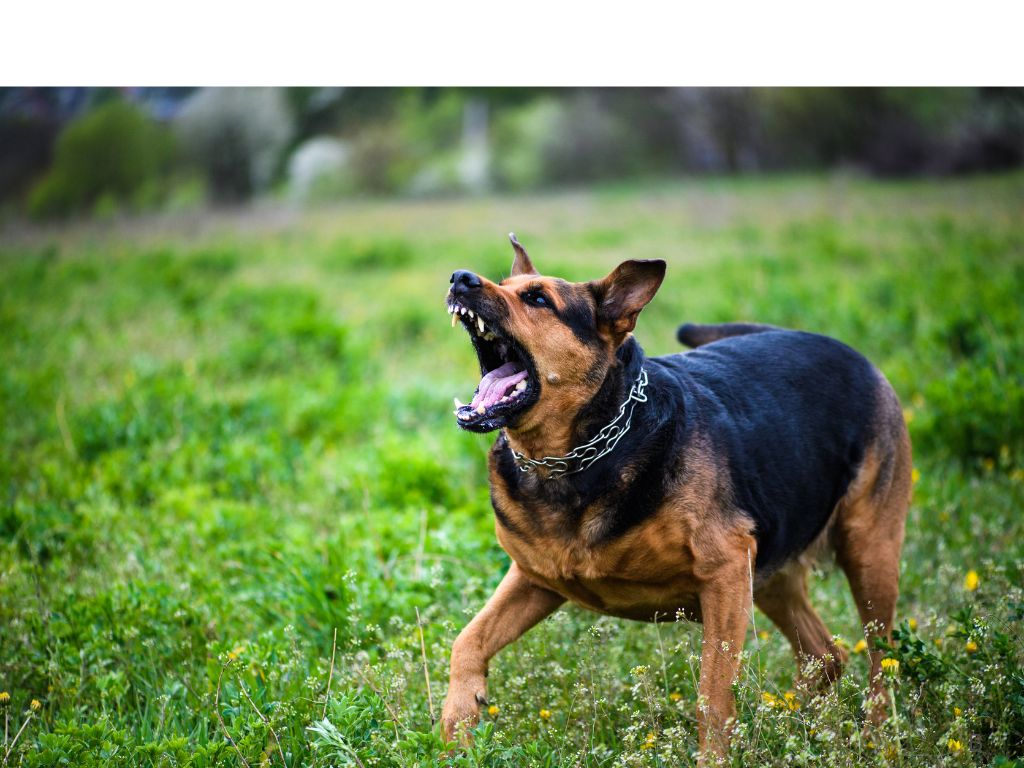
Understanding Canine Vocalizations
Vocalizations are often the most misunderstood form of canine communication. Barking and growling are frequently interpreted as threats, but this is not always the case. Barking, for instance, often reflects a dog’s internal conflict between different impulses. It might mean, “I want to play, but I’m unsure,” or “I like you, but I’m cautious,” or even “Come closer, but keep your distance.” Once a dog resolves this inner conflict, the barking usually stops as they focus on their chosen action.
Growling is more often associated with threats, but it commonly indicates unease in a particular situation. Sometimes, growling and gentle mouthing can be playful invitations. This can be concerning for owners because distinguishing between a threat-growl, an insecure-growl, and a play-growl can be challenging.
If your dog frequently growls, it doesn’t necessarily mean they are aggressive or dominant. More often, it indicates insecurity, especially in middle-ranking male dogs who might use growling as a bluff to compensate for their uncertainty. These dogs might growl persistently to emphasize a minor point. In contrast, truly aggressive dogs are often “all bark and no bite.” A top dog, confident and secure in its position, seldom resorts to threats. When they do, the warning is subtle, and any follow-up action is swift and decisive.
Understanding the context is crucial. “Atmosphere cues,” such as a raised paw or a play bow, provide essential insights into a dog’s intentions. A raised paw might indicate that subsequent growling and chasing are meant playfully. Dogs are adept at reading these contextual cues, whereas humans often struggle to interpret them correctly.
The Role of Olfactory Communication
Many dog owners notice that their pets urinate more frequently than necessary for physical relief. This behavior, known as urinary scent marking, serves several vital functions. Through scent marking, dogs establish territorial boundaries, attract mates, identify individuals, and signal their puppy status to other dogs. This form of olfactory communication is a key aspect of canine social interaction.
Territorial Marking
When dogs urinate in specific areas, they are essentially staking out their territory. The scent left behind tells other dogs that this area is claimed. This behavior is crucial in the wild for maintaining order and preventing conflicts among packs. Even domesticated dogs retain this instinctual behavior, marking their yards, favorite walking routes, and other frequented spots.
Sexual Attraction
Urinary scent marking also plays a significant role in sexual attraction. The scent of a dog’s urine can convey a wealth of information, including the dog’s sex, age, and reproductive status. Female dogs in heat produce urine with distinct chemical markers that signal their availability to male dogs. Males, in turn, mark their territory more frequently during this time to assert their presence and attractiveness.
Individual Recognition
Dogs can recognize other individuals through their unique scent markings. Each dog’s urine carries specific chemical signatures that provide clues about their identity. This capability allows dogs to track the comings and goings of familiar and unfamiliar canines within their territory. By sniffing these marks, dogs gather information about their social environment, including who has been around and when.
Advertisement of Puppy License
Puppy urine has a distinct scent that communicates their young age to adult dogs. This “puppy license” often grants them leniency and protection from older dogs. The unique odor of puppy urine signals to adult dogs that the young pup is not a threat and should be tolerated despite its playful and sometimes annoying behavior. This social grace period is crucial for the development and socialization of young dogs.
Making a Strange Environment Feel Like Home
Dogs use urinary scent marking to make unfamiliar places smell familiar. By marking new locations with their scent, they create a sense of ownership and comfort. This behavior is similar to humans personalizing a new space with their belongings. For dogs, a marked environment feels more secure and familiar, reducing anxiety in new or strange settings.
Dog Urine as Communication
Think of dog urine as the canine equivalent of email. Each mark carries a unique message, contributing to a communal scent bulletin board. Messages might range from “Spot was here” to “Trixie is in heat,” providing a wealth of social information that dogs use to navigate their interactions.
By understanding the intricate ways dogs communicate through body language, vocalizations, and scent marking, we can better appreciate their social behaviors and enhance our relationships with our furry friends.
Closing Thoughts on Canine Body Language and Communication
Understanding your dog’s body language and communication cues is important for building a strong, trusting relationship. By learning to interpret their signals—whether they’re expressing happiness, fear, stress, or appeasement—you can respond appropriately and foster a safe, supportive environment for your furry friend. This knowledge not only helps prevent misunderstandings but also enhances the bond you share, allowing for more harmonious and enriching interactions. Remember, your dog is always communicating with you; it’s up to us to listen and understand their unique language.



